Main menu
Common skin conditions

NEWS
Join DermNet PRO
Read more
Quick links
Author: Dr Harmony Thompson, Dermatology Registrar, Auckland District Health Board, July 2022. Copy edited by Gus Mitchell
Introduction
Causes
Features
Diagnosis
Differential diagnoses
Treatment
Prevention
Shoe contact dermatitis can be defined by dermatitis on the feet caused by any footwear consisting of multiple different materials. Contact dermatitis may be due to allergic (type IV hypersensitivity reaction) or irritant dermatitis.
Shoe dermatitis represents approximately 10% of all persons attending for patch testing. The culprit agent can range from products found in leather, colourants, rubber, or adhesive components, and can occasionally be mimicked by an allergy to agents on socks or stockings.
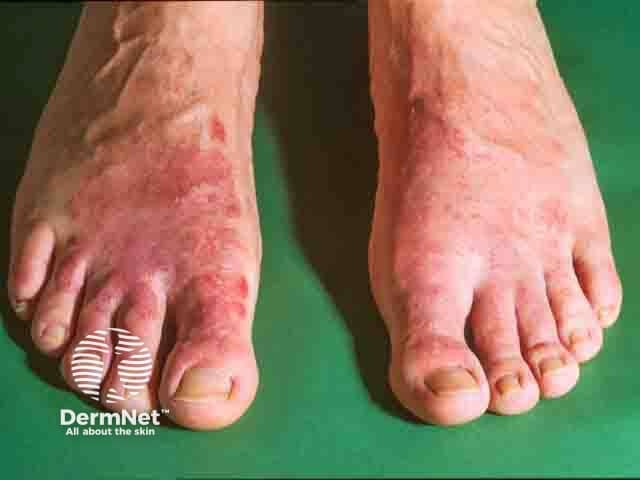
Symmetrical eczema on the dorsal feet, sparing the interdigital spaces, due to chromate allergy
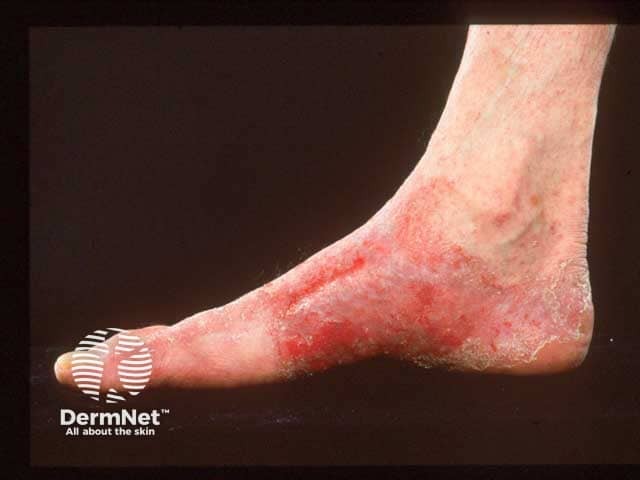
Allergic contact dermatitis of the foot due to PTBP resin in a shoe adhesive
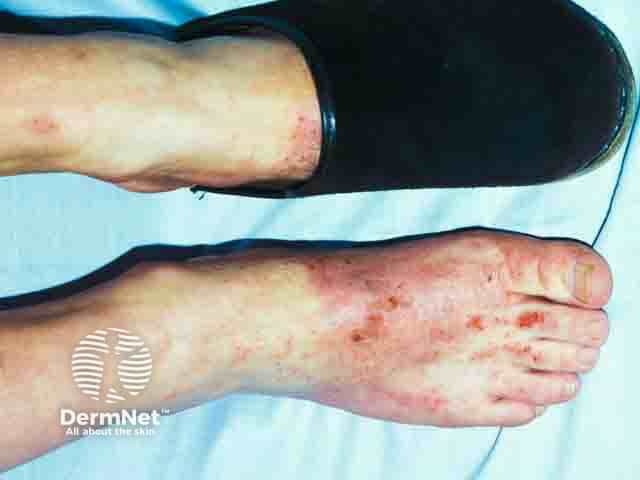
Allergic contact dermatitis due to a component of the shoe upper
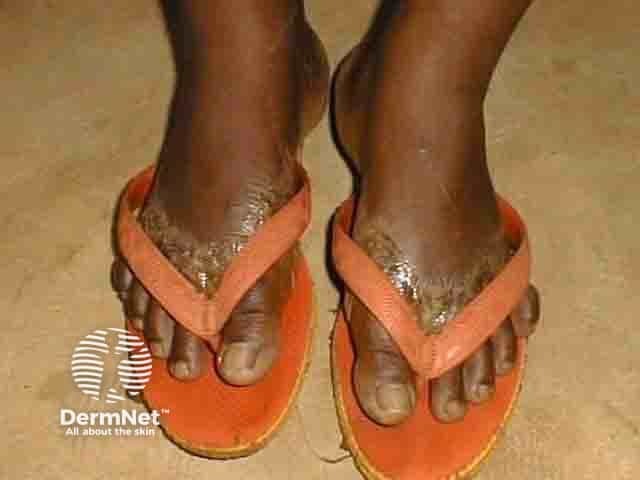
Flip-flop allergy from a rubber accelerator
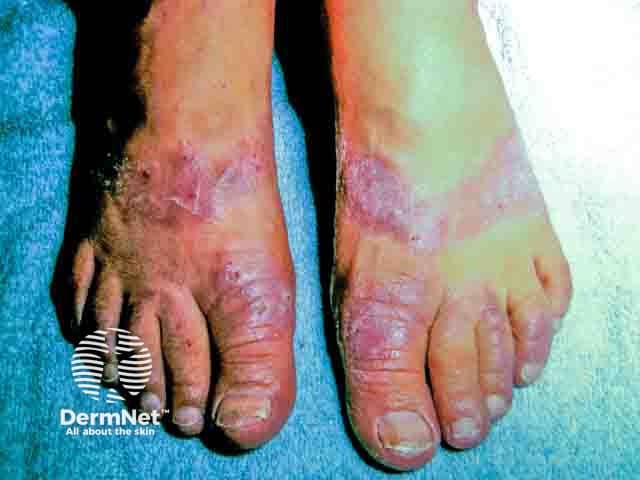
Contact allergy to the rubber thong in flip-flops
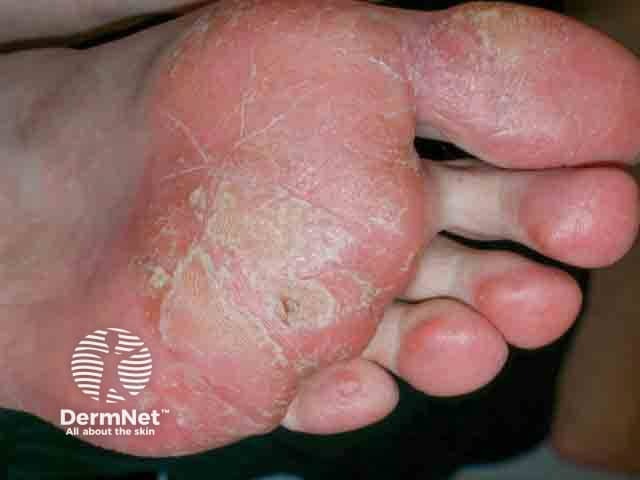
Allergic contact dermatitis on the sole due to PTBP resin
Many different products and chemicals are used in the manufacturing of footwear. Factors that increase the risk of shoe contact dermatitis include heat, friction, occlusion, sweat, and atopy/allergy.
Allergy may be due to the material itself, such as leather or rubber, or it may be due to other constituents such as adhesives, decorations, sprays, insoles, or other products applied to the shoes.
The following are used in accelerating rubber vulcanisation:
See rubber accelerator contact allergy for more information.
Added to neoprene products, eg, wet suits, gloves, swim goggles, shoe insoles:
Typically, the rash is symmetrical, with the volar and dorsal aspects of the feet affected, the toe flexural creases and instep often being spared. Sometimes allergy to particular shoe components dictates the distribution of dermatitis (eg, heel box constituents affect the heel, nickel in zips, buckles, and ski hooks affect the adjacent skin only).
Symptoms of contact allergic dermatitis may include swelling, redness, blisters or cracks in the skin, burning, itchiness, and pain.
The allergy can develop over a long period as the skin on the feet is repeatedly exposed to a specific allergen found in the shoe. However, it is not unusual to suddenly become allergic to a substance after months or years of exposure.
Patch testing (allergy testing) is often utilised and may involve testing against both the standard allergen series as well as a special footwear series due to the many potential allergens present in the shoe.
Patch testing with portions of the patient’s shoes, alongside a shoe ‘screening tray’ of common additives and chemicals, is essential in making a correct diagnosis. See individual contact allergens for patch testing recommendations.
Shoe contact dermatitis should clear rapidly once the offending allergen is removed. This will mean not being able to wear the offending shoes ever again unless the allergen can be removed or avoided in new footwear. For example, allergy to chromate in leather can be avoided by choosing vegetable-tanned leather items.
The eczematous component is treated with topical steroids and emollients. Antibiotics or antifungals may need to be used if there is a suspected infection.
For more information, see contact dermatitis.
The best way to prevent shoe contact dermatitis is by avoiding all footwear that contains the culprit allergen.
Some steps to reduce reactions include:
In some countries, broad categories of allergens (leather and rubber) are identified on the packaging of new shoes. However, identification of known culprit allergens, even after contacting the manufacturers, can be difficult.